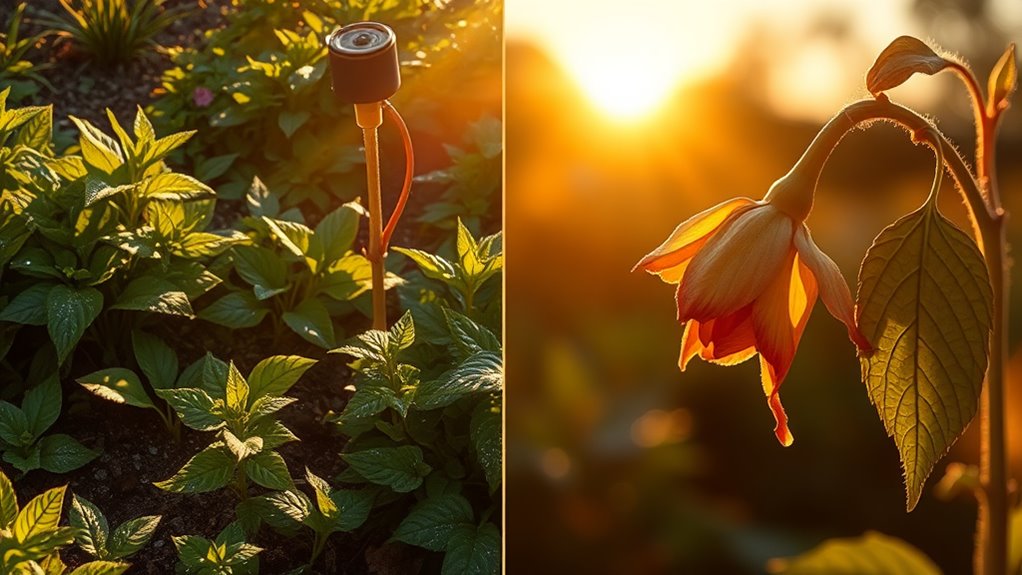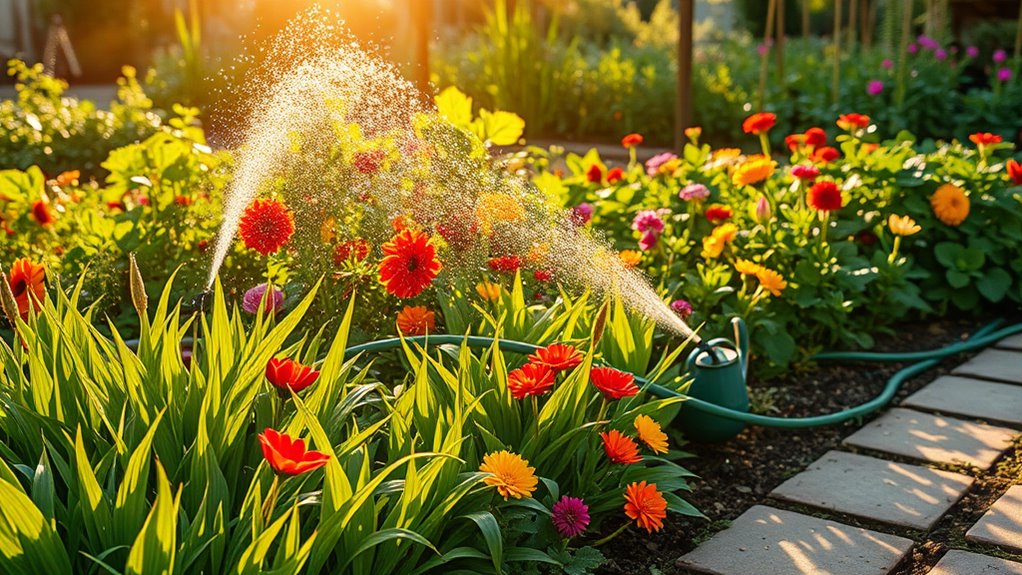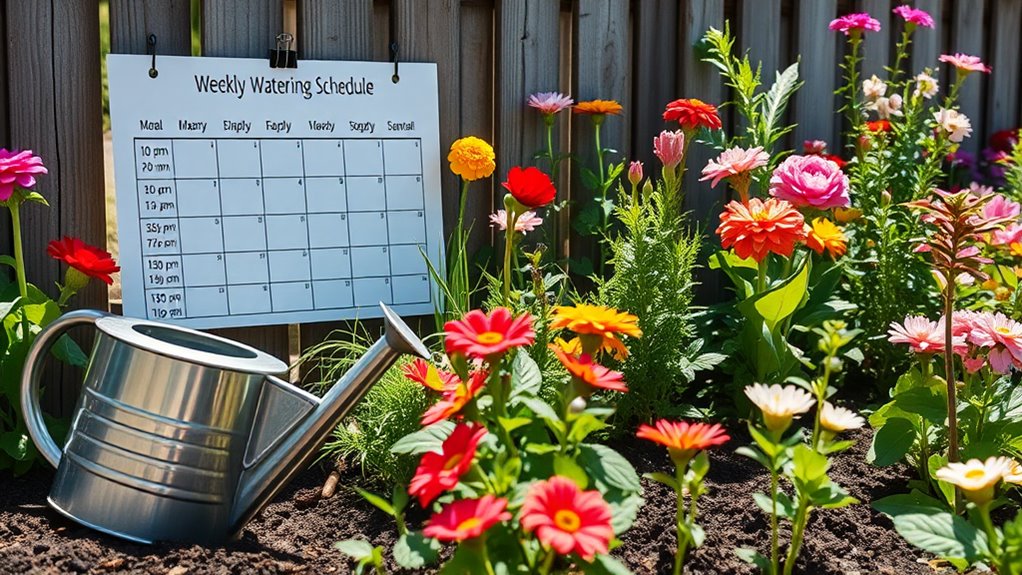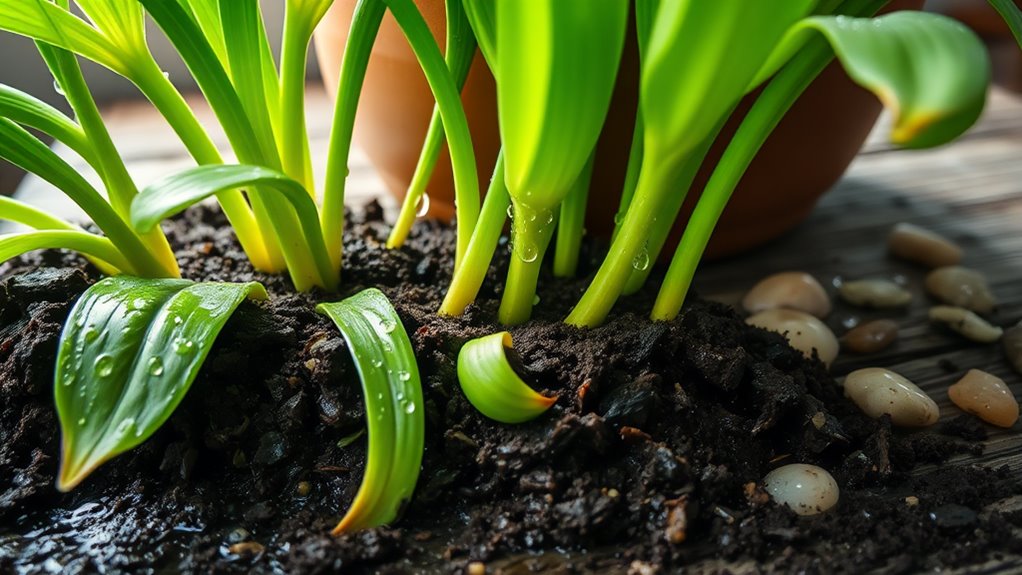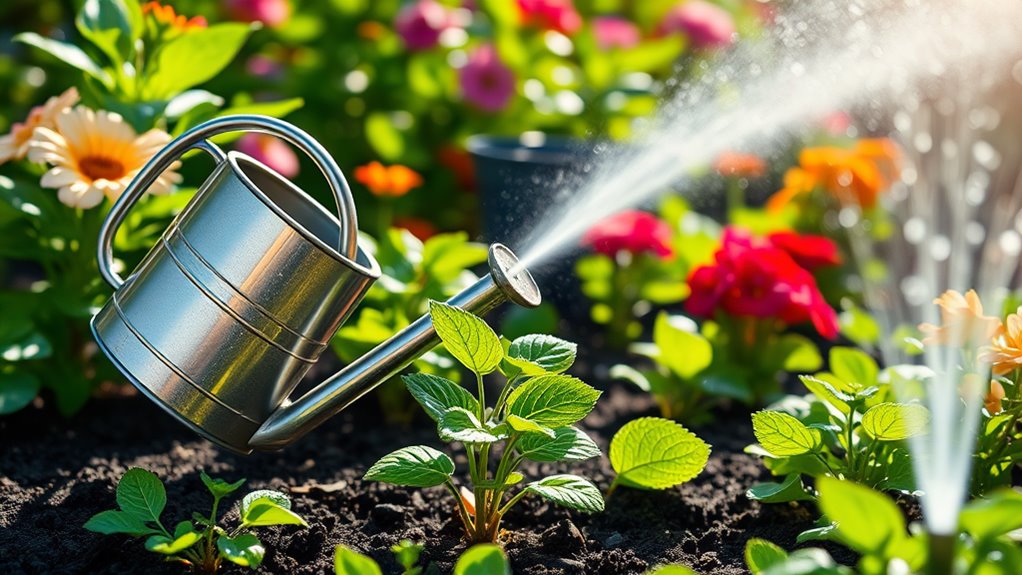The Best Time of Day to Water-And What Happens If You Don’t
Watering your plants at the right time can make all the difference in their health and growth. Early mornings are ideal, allowing your plants to absorb moisture before the heat sets in. If you don’t prioritize this timing, you’ll likely notice troubling signs of dehydration, like drooping leaves and stunted growth. Understanding the nuances of watering practices can prevent these issues. So, what should you be aware of to keep your plants thriving?
The Ideal Time of Day for Watering Plants
When you’re planning to water your plants, early morning often proves to be the ideal time. This is when temperatures are cooler, allowing for better absorption and minimal evaporation.
To enhance your gardening success, heed this watering time advice: aim for just after dawn. Your plants will thrive, soaking up moisture effectively, making your efforts truly rewarding. Additionally, proper hydration techniques throughout the growing season will further support your plants’ health and vitality.
Don’t underestimate the impact of timing!
Benefits of Watering at the Right Time
Watering your plants at the right time brings a host of benefits that can significantly boost their health and growth.
You ensure deeper root development when you water in the early morning or late afternoon, minimizing evaporation. This timing also helps prevent fungal diseases caused by excess moisture on leaves.
With optimal watering, your plants thrive, producing lush foliage and vibrant blooms. Additionally, implementing smart watering techniques can greatly enhance efficiency and reduce water waste.
Signs of Dehydration in Plants
As your plants absorb sunlight and nutrients, they also rely heavily on adequate water to thrive, making it crucial to recognize the signs of dehydration.
Watch for drooping leaves, crispy edges, and discolored foliage. Stunted growth and leaf drop are other indicators. If you notice these signs, act quickly to revive your plants and ensure they receive the hydration they desperately need. Additionally, remember that overwatering mistakes can exacerbate dehydration, leading to further stress on your plants.
Consequences of Overwatering and Underwatering
Striking the right balance in watering is essential for your plants’ health; too much or too little can lead to serious consequences.
Overwatering can suffocate roots, promote fungal diseases, and cause yellowing leaves.
Conversely, underwatering leads to wilting, stunted growth, and even death.
Both situations stress your plants, so pay attention to their needs for vibrant, thriving greenery. Additionally, watering your garden during extreme heat can help ensure that your plants remain hydrated and healthy even in scorching conditions.
Tips for Effective Watering Practices
How can you ensure your plants receive just the right amount of water? Start by checking soil moisture with your finger; if it feels dry an inch down, it’s time to water.
Water deeply and less frequently to encourage deep root growth. Early mornings are best for absorption. Additionally, watering in the morning minimizes water usage and allows plants to absorb moisture before the heat of the day.
Lastly, consider using a soaker hose for consistent, gentle watering that minimizes evaporation.

